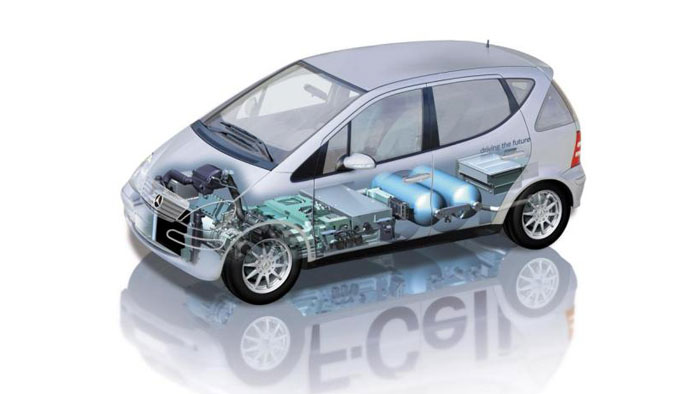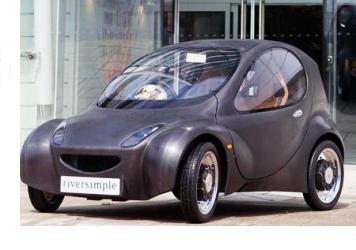Having celebrities drive a particular brand of car is a tried and tested method of advertising, but it’s rare to see them drinking from its exhaust pipe.

Hollywood stars Diane Kruger and Joshua Jackson have driven across California’s Death Valley drinking only the emissions produced by a Mercedes F-CELL – an electric car powered by hydrogen that emits only water over its 250-mile tank range.
The F-Cell uses hydrogen rather than batteries to power an electric motor. The absence of batteries gives a lower weight, longer range and a quicker refuelling time.
| A brief history of the fuel cell | |
|---|---|
| 1838 | Principle of the fuel cell discovered by German scientist Christian Schönbein |
| 1959 | First use of fuel cell-driven vehicle – a tractor |
| 1966 | GM Electrovan was first attempt at hydrogen fuel cell-powered car – extremely heavy, it could travel up to 70mph for only 30 seconds |
| 2001 | The Chrysler Natrium was first prototype car with its own on-board hydrogen processor |
| 2008 | Honda launches first production fuel cell car |

The Riversimple hydrogen car
Hydrogen car builder Hugo Spowers plans to challenge the status quo by replacing outright car ownership with a system similar to a mobile phone contract.
According to Spowers: “The key aspect of Riversimple is that the company is selling a service rather than a car. Once you are selling a service, you have a direct interest in the car being as cheap as possible, reliable and low-maintenance,because we pay for that, the customer to keep it for long as possible, but no longer than he wants it, because we want it to have as long a life thereafter so we can then lease it into the second hand trade, which is a bigger market than the first-hand market.”
Riversimple is not the first company to offer a hydrogen car, but its approach to car making is radically different to any other manufacturer. Their designs are ‘open source’ which means they are freely available to other car makers who would like to exploit the technology. The designers hope to encourage an environmentally sustainable alternative to conventional car manufacturing.
Thomas Lankester
‘The absence of batteries gives a lower weight, longer range and a quicker refuelling time.’
Oh really?
The Tesla S (successfully in commercial production unlike the Merc F-Cell) has a range of 265 miles (EPA rated) and a battery swap (refuelling) time half that of a petrol car:
http://www.teslamotors.com/batteryswap
And whilst the luxury segment Tesla S is outside the normal car owners purse, just how expensive is the Merc F-Cell?
Neil Pearson
Think these are the way forward? Hydrogen is expensive to produce tricky to transport and store. Read this http://www.popularmechanics.com/science/energy/next-generation/4199381 .